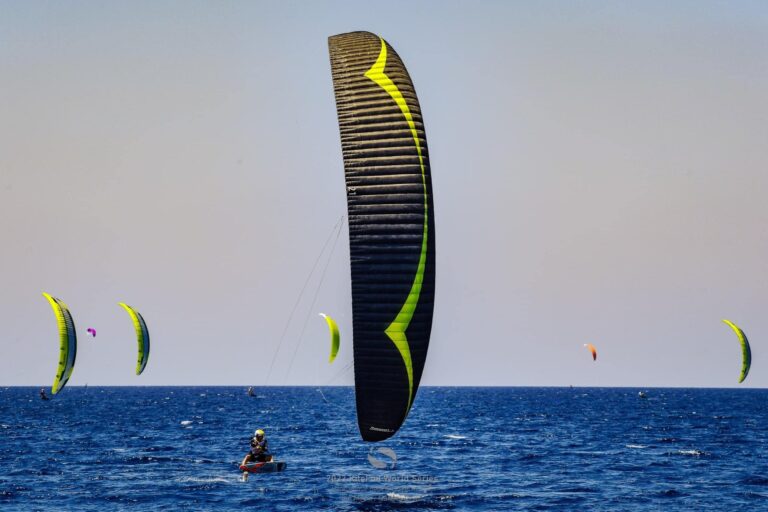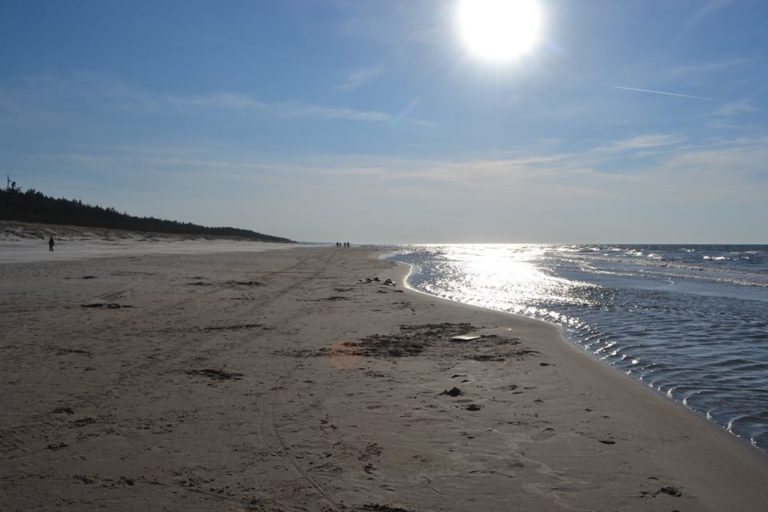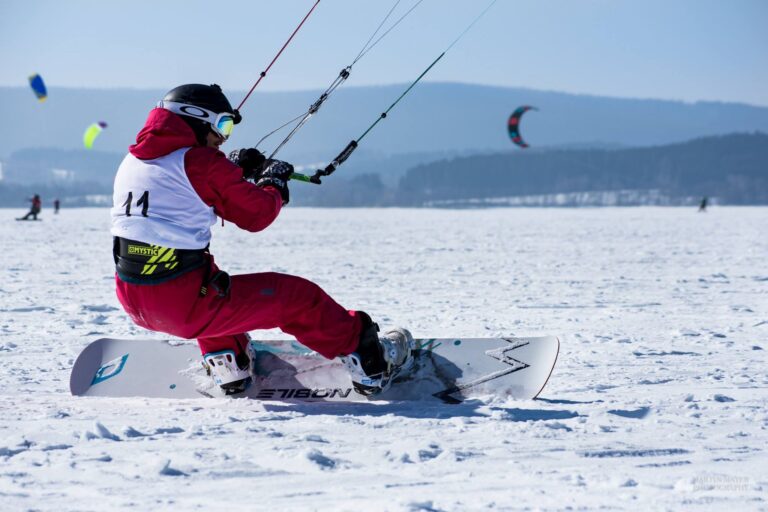“Wave, wave, you’ll get it, you’ll get it!” This phrase will both motivate and scare you on Varanger, you will dream about it, you will think about it often and you will learn again and again on every hill how to squeeze the most out of the waving and just not give up.
I’d like to share my experiences from this year’s crossing of Varangerhalvøya Nature Park on a snowkit, an event inspired by one of the most demanding snowkit enduro races VAKE, but adapted for riders who actually spend most of their working time in the office. What exactly is it all about? You take your kites, skis, sleeping bag, tent and food for a few days and, with Lafak as instructor and expedition leader, you head out into the middle of a national park to enjoy this utterly desolate and absolutely beautiful part of the world. It’s a protected area located just above the Arctic Circle in the very north of Norway and is, like the whole event, strongly idiosyncratic.
You start on the shores of the Barents Sea and reach altitudes of around 600 metres. If you’re lucky with the weather, you enjoy the views of the sun-drenched hills around you along the way and feel free to take it easy with your top speed downhill, because a kilometre ahead you see a great straight and a counter slope with fresh dredge where you can brake in peace. Or you might get a bit washed out, but the gravel will hold you up… If you’re a bit less lucky with the weather, you can’t see a step, a blizzard blows right in your face and the wind is around 20 metres, you’re soaked and really cold. Over the course of a few days you’ll probably experience both. So do we. The weather there can change very quickly and it just fits the overall atmosphere of Varanger.
As for sleeping on expedition, there I strongly expanded the boundaries of what is actually still cool. You sleep differently. For example, you can pitch a tent and use whole skis instead of tent stakes on a snowy plain exposed to the wind to keep it all from flying away. Or if you want to get a bit more active, you sleep in the garden. Which also has its charms here in the Arctic, especially when you have the Northern Lights overhead. Interesting detail by the way, I don’t really understand it, but no one caught a cold.
The slopes of the hills are usually not too steep, so they can be ridden pretty much anywhere and everyone can find a slope that they find just adventurous enough. And up between the peaks are the plains, which are really vast. Just for the record, don’t imagine the meaning of “vast” as we know it from Bohemia. This is Norwegian for “vast”. It means that one plain is the size of a standard day trip to Bozak. And there’s snow everywhere. No trees, practically no rocks, just endless snowy plains.
In those few days we drove over 300 km. Most of the time we had good winds, somewhere between 5 and 15 meters per second. And depending on the strength of the wind, we took a bigger or smaller kite. Because of the variable conditions, everyone had three kites with them from Lafák, which is basically a necessity – a four for strong winds (we rode that about half the time), then something medium around nine meters, and then a fifteen-meter kite for situations when the wind starts to ease and you start panicking and flapping.
If you can get the size of the kite right for the wind, you can choose the riding style you like. Either you get a good run for it, get into a racing position and roll in any direction you can. Or you can sort of relax on those skis, hold onto the bar like a tram pole, enjoy the surrounding scenery, and let yourself ride to the finish line mostly for free.
But when the kite itself doesn’t pull you uphill due to lack of wind, you have to start waving it around, technically and sensitively, to get it to move at all. And what if you can’t? Well, you’re in… If you decide to give up, you pack up the kite, pull the skialp straps on your skis and head off on your own. Not that it’s not a nice walk, or that it’s gonna spoil the views in any way. But I’ll offer some numbers for comparison. At one point on the last day of the expedition, my watch showed me covering 79.8 km in 4 hours and 32 minutes. You can only go a maximum of 5 km per hour on skip in this terrain. Well, when you’re in the middle of the park sixty kilometers from the base, you have no signal, your plane is flying home the day after tomorrow and you’re not uphill, you focus on one thing. Wave, wave, you’re gonna make it, you’re gonna make it…
The whole event brought me, of course, a tremendous shift in snowkit riding technique, but mainly an introduction to the reality of a small polar expedition. I would never have gone for such a crazy thing on my own, but when you know that it’s organized by someone who has been doing such things himself in much worse conditions for years and is still alive and well, you just trust him and go for it. It’s not for everyone, but this way in hindsight I’d say it’s more dateline than it looks at first glance. So Lafoun, thanks! 😊


